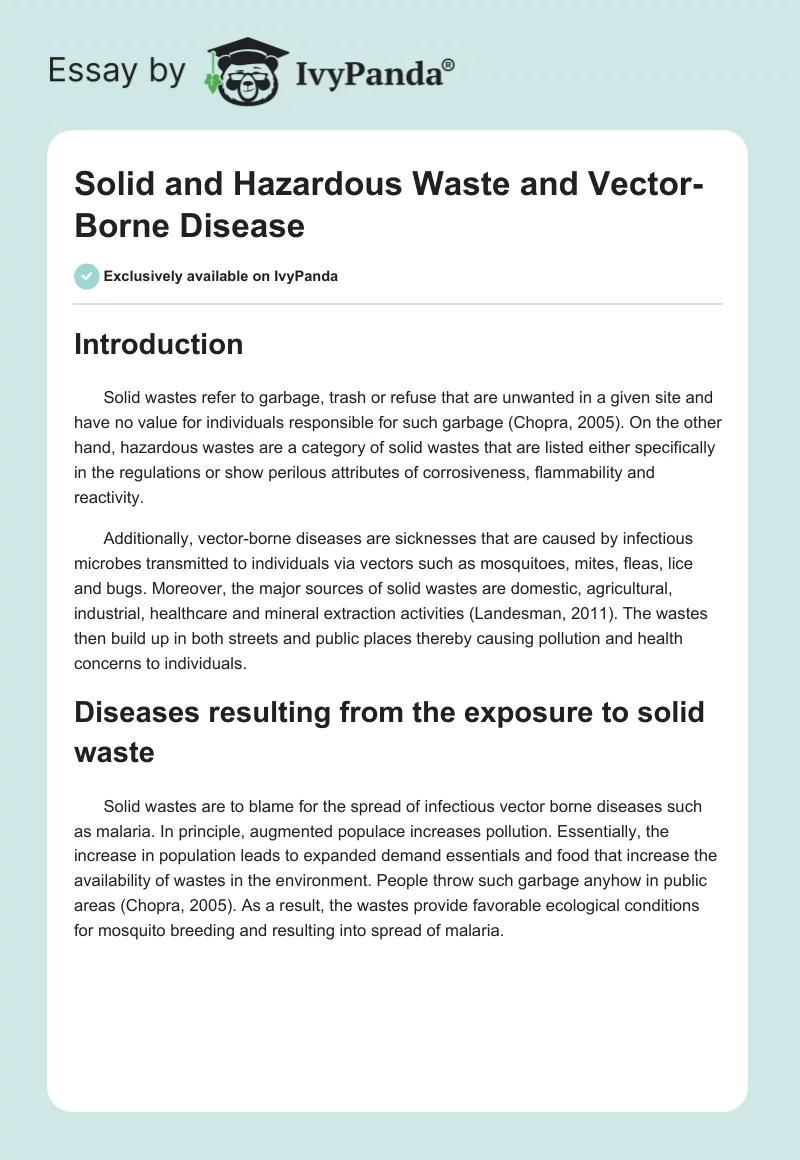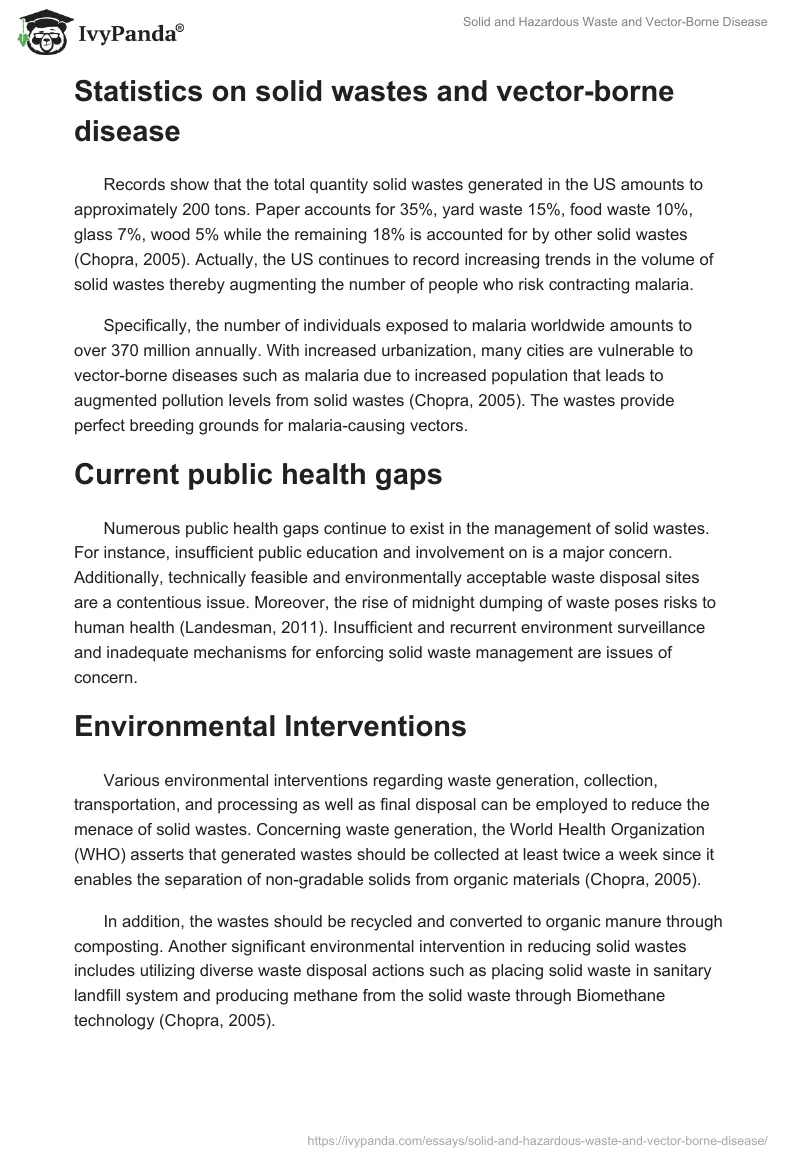Introduction
Solid wastes refer to garbage, trash or refuse that are unwanted in a given site and have no value for individuals responsible for such garbage (Chopra, 2005). On the other hand, hazardous wastes are a category of solid wastes that are listed either specifically in the regulations or show perilous attributes of corrosiveness, flammability and reactivity.
Additionally, vector-borne diseases are sicknesses that are caused by infectious microbes transmitted to individuals via vectors such as mosquitoes, mites, fleas, lice and bugs. Moreover, the major sources of solid wastes are domestic, agricultural, industrial, healthcare and mineral extraction activities (Landesman, 2011). The wastes then build up in both streets and public places thereby causing pollution and health concerns to individuals.
Diseases resulting from the exposure to solid waste
Solid wastes are to blame for the spread of infectious vector borne diseases such as malaria. In principle, augmented populace increases pollution. Essentially, the increase in population leads to expanded demand essentials and food that increase the availability of wastes in the environment. People throw such garbage anyhow in public areas (Chopra, 2005). As a result, the wastes provide favorable ecological conditions for mosquito breeding and resulting into spread of malaria.
Statistics on solid wastes and vector-borne disease
Records show that the total quantity solid wastes generated in the US amounts to approximately 200 tons. Paper accounts for 35%, yard waste 15%, food waste 10%, glass 7%, wood 5% while the remaining 18% is accounted for by other solid wastes (Chopra, 2005). Actually, the US continues to record increasing trends in the volume of solid wastes thereby augmenting the number of people who risk contracting malaria.
Specifically, the number of individuals exposed to malaria worldwide amounts to over 370 million annually. With increased urbanization, many cities are vulnerable to vector-borne diseases such as malaria due to increased population that leads to augmented pollution levels from solid wastes (Chopra, 2005). The wastes provide perfect breeding grounds for malaria-causing vectors.
Current public health gaps
Numerous public health gaps continue to exist in the management of solid wastes. For instance, insufficient public education and involvement on is a major concern. Additionally, technically feasible and environmentally acceptable waste disposal sites are a contentious issue. Moreover, the rise of midnight dumping of waste poses risks to human health (Landesman, 2011). Insufficient and recurrent environment surveillance and inadequate mechanisms for enforcing solid waste management are issues of concern.
Environmental Interventions
Various environmental interventions regarding waste generation, collection, transportation, and processing as well as final disposal can be employed to reduce the menace of solid wastes. Concerning waste generation, the World Health Organization (WHO) asserts that generated wastes should be collected at least twice a week since it enables the separation of non-gradable solids from organic materials (Chopra, 2005).
In addition, the wastes should be recycled and converted to organic manure through composting. Another significant environmental intervention in reducing solid wastes includes utilizing diverse waste disposal actions such as placing solid waste in sanitary landfill system and producing methane from the solid waste through Biomethane technology (Chopra, 2005).
Incineration of waste also reduces the volume of garbage. Further, creation of awareness among the public through education on the health effects of solid wastes is a critical environmental intervention.
Conclusion
In summary, solid and hazardous wastes pose great risks to human health. Actually, the solid wastes enhance the spread of vector borne diseases such as malaria by providing favorable ecological conditions for mosquito breeding.
Additionally, the increasing trend of solid waste generation requires community-based public health and environmental interventions regarding waste generation, collection, transportation, and processing as well as final disposal. However, the current public concerns for solid waste management ranging from insufficient public education and involvement to inadequate mechanisms for enforcing solid waste management must be addressed.
References
Chopra, K. R. (2005). Ecosystems and human well-being: Policy responses. Washington, DC: Island Press.
Landesman, L. Y. (2011). Public health management of disasters. Washington, DC: American Public Health Association.


